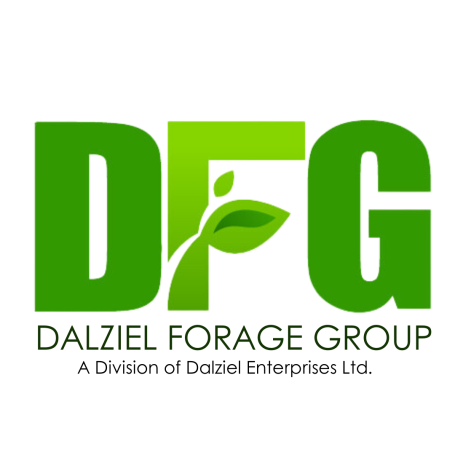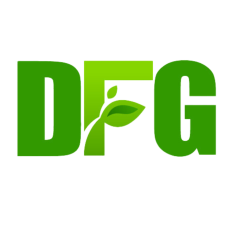Frequently Asked Questions
About Compressed Hay and Hay in General
Not everyone is familiar with compressed hay and we get a lot of questions about our products. We've done our best to answer some of the most common questions here:
What is compressed hay? How do you feed it?
After hay has been baled and gone through its sweat, we will put the hay through our hay compacting machine. This machine uses hydraulics to condense the original material until is about double its original density and then places straps on it to hold the new bale together. This process is completed for several reasons, including more efficient transportation, improved storability and improved resistance to moisture and humidity.
Once the bands are cut off, the compressed bales can be fed just like a regular small square bale. The bale will easily break into flakes or wafers that can be distributed as needed. Just remember that the hay is denser so a flake may seem smaller than you’re used to, it likely contains the same weight of feed. We want to ensure that we are feeding our animals by weight, not by volume so they are not being over fed.
What is 3 way mixed hay?
3- way mixed hay is a mixed hay that has three different plant types in it. The most common blend is a mixture of Timothy Grass, Orchard Grass and Alfalfa.
Do you have low sugar hay?
We are often asked if we have low sugar hay, and the answer is: It depends. We always have clean timothy hay and, as a rule, timothy has lower sugar content than cool season grasses like orchard grass and fescue. It also won’t have the high calorie content of alfalfa that can lead to glucose conversion in your horse’s liver. With that said, we don’t always have inventory of hay tested below 10% sugar so if your companion is medically sensitive to >10% sugar, please check with us to confirm what we have in stock.
When is new crop hay going to be available?
Typically, first cut mixed hay and timothy have been harvested by late July to mid-August. After that, the hay must go through sweat before we can compress it. We usually have new crop available by mid- September and second cut by mid October.
Which hay should I pick?
That depends on what type of animal you are feeding, what stage of life they are in and if there and special nutritional or situational needs. If you have specific needs that were recommended by a vet or animal nutritionist, please contact us to find out what we have in stock. We have a variety of feed types so it’s very likely we will have something suitable for your animal. If you’re not sure what you need, we are happy to make recommendations based on what our other happy customers have purchased for their animals. But please note that we are not nutritionists or veterinarians.
Can I feed 2-3 year old hay that has been in storage?
Yes. If the hay has been stored in a dry place with little sun exposure and good airflow, hay that is 2-3 years old is entirely suitable to feed.
What does export quality mean?
We have been exporting hay for over 30 years. To be licensed for export, we must maintain and follow a rigorous Quality Management System that is regularly reviewed and audited by the Canadian Food Inspection Agency. When we say export quality, we mean the hay has been through our inspection process and the hay is free of mold, mold spore dust, water damage and contains very low weed content.
Is there dust/mold in the hay?
Our hay is inspected and sorted so that it does not contain mold or mold spore dust. Sometimes, depending on a number of variables, our hay may contain non-harmful hay fractures (leaf dust) but we carefully inspect and monitor bale moisture levels to make sure there is no mold spore dust.
How much Alfalfa is in the hay?
When it comes to mixed hay, we will often have products available with a range of alfalfa content from 10% up to 80%. Please let us know what you’re looking for and we will find the product for you.
How much do the bales weigh?
Our compressed “half cut” bales weigh around 40-45 lbs each so a bundle of 24 weighs about 1000 lbs.
Is there a feed test on the hay?
Prior to 2023 crop we only feed tested selected stacks so we may not have a feed test. Due to popular demand, starting with 2023 crop we will increase the frequency of feed testing so you can be supplied with a nutritional analysis of your hay.
How much protein?
The protein level will vary with the percentage of alfalfa in the hay. Higher alfalfa= higher protein level. Starting with 2023 crop we will be able to provide a protein level analysis for our mixed hay.
How do I store the hay?
In a perfect world, we recommend that the hay be stored in a covered building. We realize that’s not always possible, so the next best option is to place your bundle on a pallet or some wood-off the ground- and cover it with a small tarp. Our bundles are stretch wrapped around four sides so even if you don’t have a tarp, only the bale tops are exposed and, because of the bales are compressed, water infiltration and spoilage is usually minimal.
Will it fit in my truck/trailer?
Almost certainly yes. The footprint of a bundle is about 48”x42”. To help you envision that, the bundles fit on top of a standard pallet, and they weigh about 1000lbs. We use a clamp type forklift to easily load in the box of a pickup or onto almost any flat deck trailer. We even have a way to load into the back of a stock trailer if you need. One thing to keep in mind is your trailer weight rating. Because compressed bales are denser, weight and not size is often what determines how much you can haul.
Do you have certified weed free hay?
Yes. To maintain our export license, we have a rigorous Quality Management System that is reviewed and audited by the Canadian Food Inspection Agency. This system allows us to certify that a hay is weed free. If you are planning to travel to an environmentally sensitive area with your horse, you can be confident that your feed will not be bringing any unwanted plant species with it.

